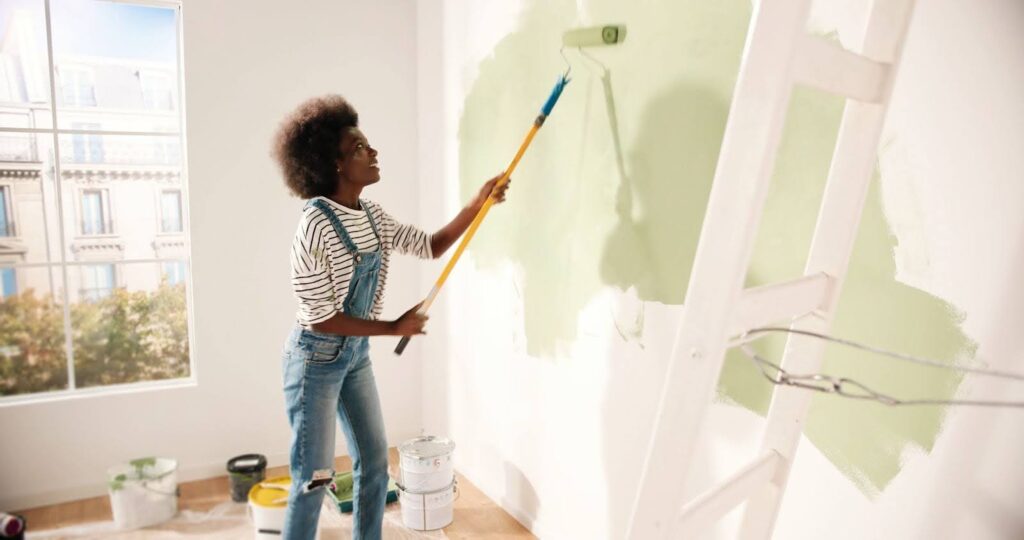Home improvement is a wonderful thing, but sometimes it can be difficult to manage every task and figure out your timeline without some help. A common question we see is: should you paint before or after you get new floors? Let’s explore the issue and determine which approach works best.
Answering the Question Straight Away
So, should you paint walls before or after flooring? Many flooring experts agree: the answer is before. There are several reasons why you should paint your interiors before installing new flooring, but there are also scenarios in which painting after the new flooring is installed may be necessary.
Avoiding Paint Spills and Drips
Even the most skilled painters can make mistakes, and it’s almost impossible to prevent some small drips while painting. Interior painting calls for a lot of preparation, and while professional painters use drop cloths and other tools to protect flooring, you can’t 100% guarantee that an accident won’t happen. If you’re taking the DIY approach for painting in order to save money or get it done on your own terms, that risk certainly increases. Most hard flooring can survive a few dribbles of paint, especially if they’re cleaned up immediately with soapy water. But what if you don’t notice a drop until it’s dried? Or what if you have carpet? When removing dried or wet paint from a flooring surface, damage is sometimes possible. From scratches to discoloration from the cleaning products themselves, even the act of removing paint can be destructive to the flooring. Depending on the color of paint used, permanent staining to the floor can occur, especially in porous materials like hardwood flooring. To prevent any damage to your new flooring, it’s wisest to paint before installation.
Preventing Damage
When you paint a room, you may need to use special tools that can actually damage your floors. Ladders are a great way to reach the ceiling, but they’re not especially kind to soft flooring. Avoid scratches from ladders and other heavy equipment by painting prior to the installation of your new flooring. Heavy paint cans can drop onto tile and crack it or make gouges in even the toughest vinyl flooring. Residential flooring is durable, but it’s not invulnerable to damage from heavy work.
Addressing Design Concerns
What if you’re worried about your flooring clashing with your paint color? Do you paint before or after installing new flooring when your interior design isn’t all mapped out? One of the most common arguments for painting after installing your new flooring is the concern for interior design. But think of it this way: paint is relatively cheap when compared to new flooring, and it can be replaced whenever you want for a lot less money and effort than flooring. Many expert interior designers will select a paint color around the residential flooring they plan for a room and will have carefully detailed what everything will look like well in advance. Even then, they will hold off on installing new flooring until after they’ve painted. While you don’t have fancy design software, you can compare samples in your space and figure out what works well together. Doing this ensures you’re not in for a big surprise when the paint is dry and the new floors have been installed.
Make an Interior You’re Proud Of
In the end, it’s almost always worth getting your flooring installed after painting to ensure that your flooring looks its best. If you’re ready to explore your Nashville flooring options once you’ve finished your painting project, talk to the experts at Ozburn-Hessey for a consultation on your remodeling.

